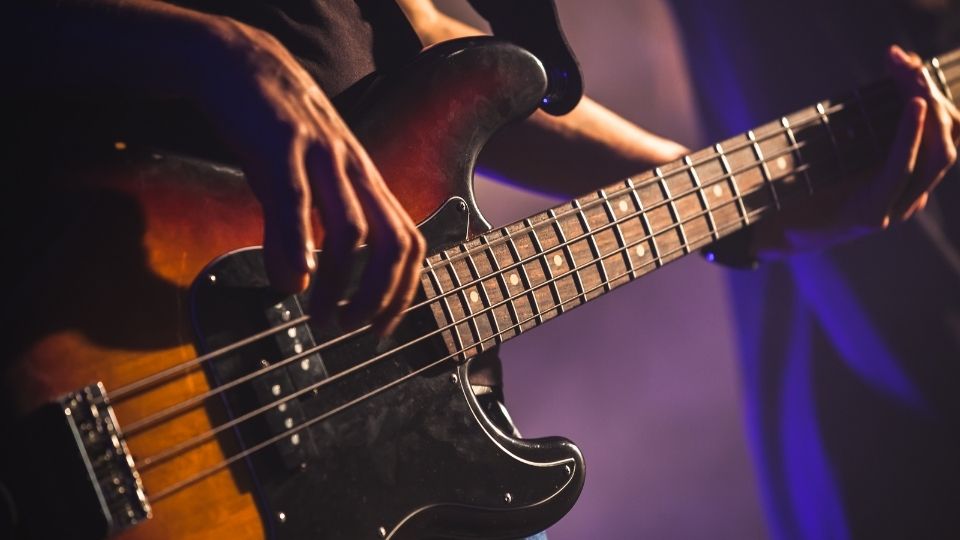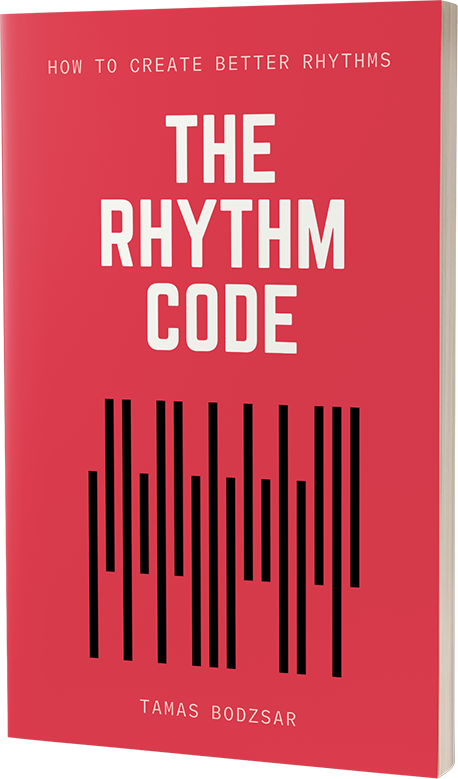
There are many different ways we can start writing a song. We can start with the lyrics, the chord progression, or with the melody. But it’s completely possible to start writing a song from a bass line. In fact, maybe that is something that suits you better. Especially if you are a bass player. So let’s say you already have a great bass line. Now how do you find the chord progression for this bass line? Here are some useful techniques you can use to easily create a chord progression.
Find the key
First, it’s practical to find out the key of your song. Finding the key will make it extremely easy to find the right chords. So how do you find the key? First, write down all the notes of the bass line. The bass might not play all the notes from the key, but it will still bring you closer to finding the key. You can also try to find the tonic of the key. Playing around with the notes can help you in this. The tonic is what we feel arrival or “home” within the key. For example, the note C in the key of C-major. If you can determine the tonic, you already have the key.
Start with diatonic chords
The majority of songs use mostly diatonic chords, so it’s always a good idea to start with these chords. What are diatonic chords? They are chords from within the key. If you use the notes of the key as root notes and build up the chords also using only notes from the key, you get diatonic chords. For example, these are the diatonic chords in the key of C-major: C, Dm, Em, F, G, Am, Bdim. Now keep in mind that most songs use the first six diatonic chords, so you can already reduce your options to those chords.
The role of the bass
It’s important to understand the role of the bass. The main role of the bass is that it provides the root note in the harmony. So if the bass is playing only one or two notes in a bar, we have a relatively easy job finding the chords because the bass is probably playing only the root notes of the chords. But what if the bass is more busy? In that case, you need to look at what the bass plays on the ONE in each bar. Because most of the time, that note is the root note of the chord. You have the root notes. What’s next? As we have already written down the chords from the key, we just have to try out those that match our root notes.
Consider rhythm
Now, what if the bass is not playing on the “ONE”, at the beginning of the bar? There are two cases for this. Maybe there is no chord change there, so the chord is the same as in the previous bar. The other reason can be anticipation. What is anticipation? In theory, all the chords are changing at the first beat of the bars. But in reality, it’s not what we always hear in music. Because many times, chords are anticipated. Anticipation is when we anticipate a note in rhythm, which means, we play that note earlier than expected. For example, if you play the bass an eighth note or a quarter note earlier, it FEELS LIKE it’s on the “one”, even though it’s not. Let me show you an example of this.

As you can see, there is no anticipation in the first example, both bass notes are on the “one” of the bar. You can see the anticipation in the second example. While the C-major chord only starts in the second bar (in theory), the bass anticipates it in rhythm. Keep in mind that it’s only anticipation if there is no note on the “one” in the next bar!
The 3rd in the bass
Most of the time, the bass plays the root note of the chords. But not always. So how do we know if it’s not the root? Well, first we try the previous method, we try to build diatonic chords as if the bass were playing only root notes at the beginning of the bars. And then listen. Does it make sense to year ear? It’s important to listen to your ear and how the song feels for you. Sometimes the bass can play the 3rd of the chord, which gives a unique sound.
We can also learn certain chord progressions that are used many times in other songs, and speculate from them. For example, let’s say we are in the key of C-major (or A-minor). If the bass plays the note “B”, most of the time it’s not a Bdim diatonic chord. Because that chord is barely used in popular genres. Although, if the chord progression is a little bit jazzy, and the bass notes are B – E – A, I know that it’s probably a II – V – I chord progression, so it’s Bm7b5 – E7 – Am. On the other hand, if the bass notes are C – B – A, I suspect that it’s a typical I – V/3 – VIm chord progression, which is C – G/B – Am in the key of C-major.
Pedal bass
What if the bass is repeating the same note for a long time? Does this mean that the chords don’t change either? No, actually, it doesn’t. This is a little bit advanced level of writing a chord progression over a static bass line. A pedal bass means that the bass is playing the same note, but the chords are changing over it. There is no formula for writing a chord progression over a pedal bass, but there are certain chords you can use on a certain bass note. The most commonly used pedal bass is when the bass plays the 5th note of the key under a changing chord progression. You can experiment with this by trying out different combinations and you just need to listen to how these combinations sound. If you like it, keep it.
The secret pattern behind successful songs
Get the eBook for $4.99

